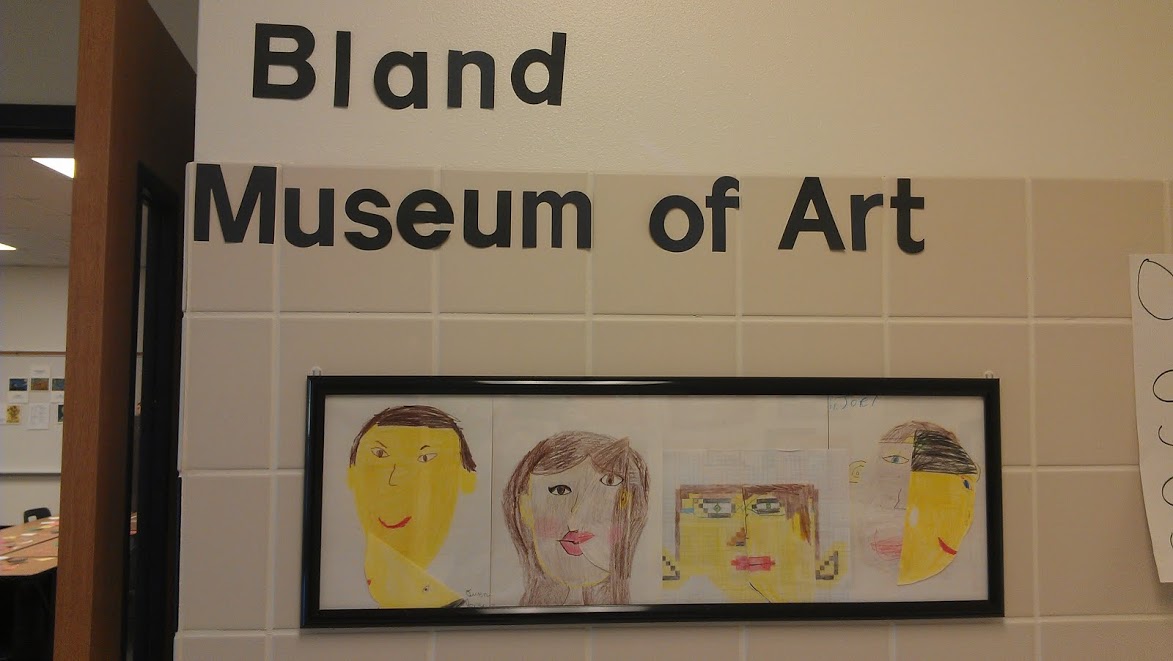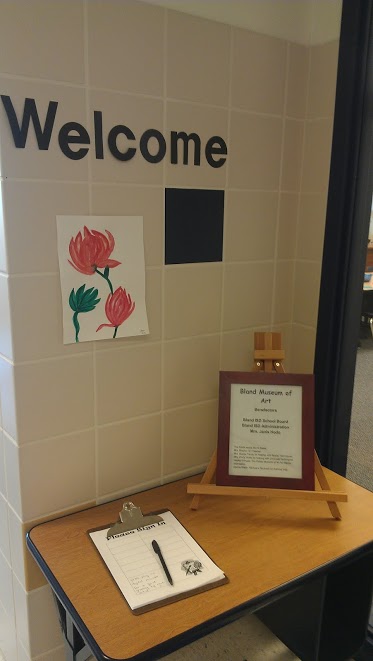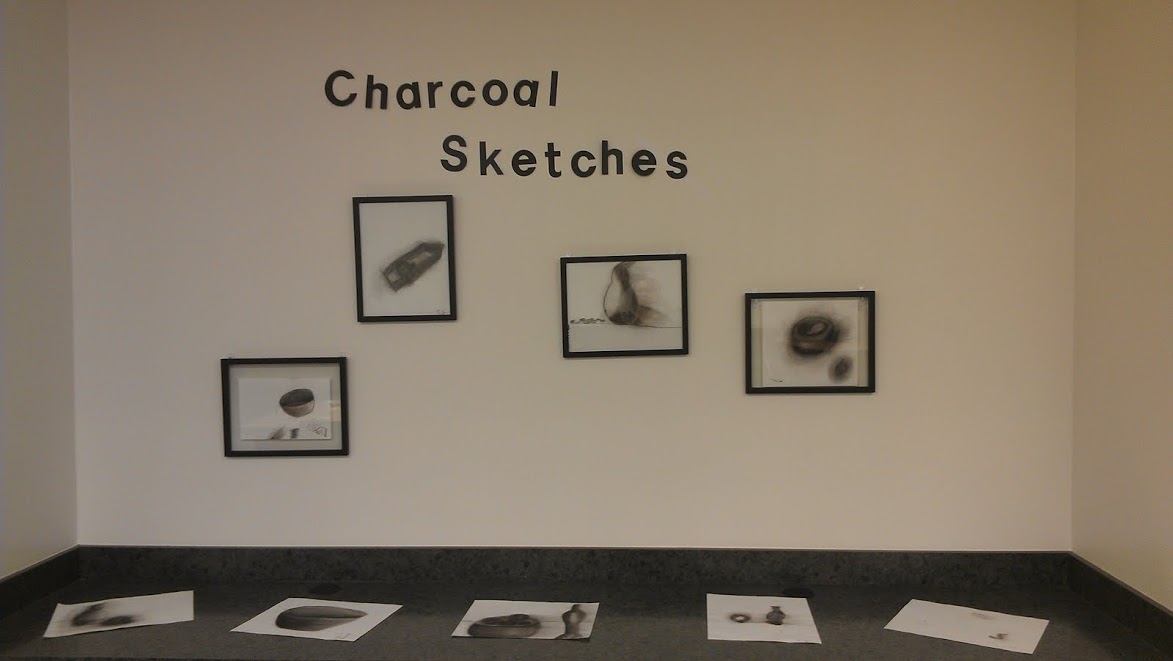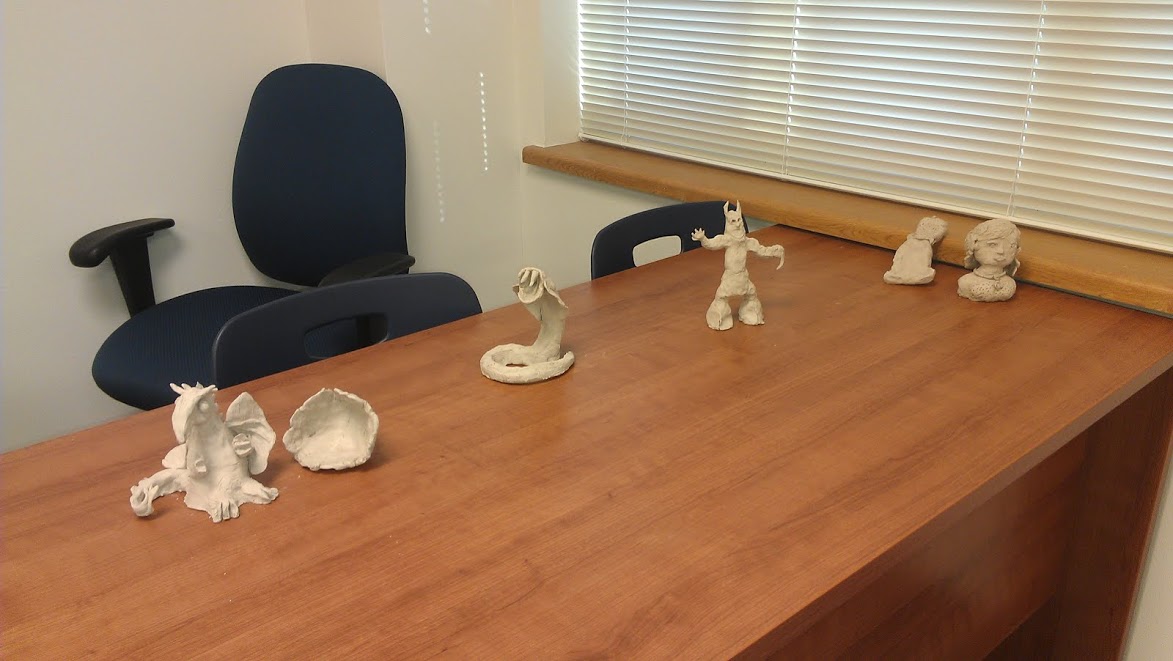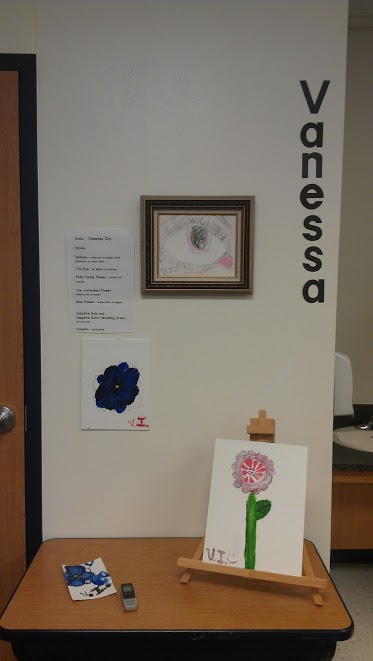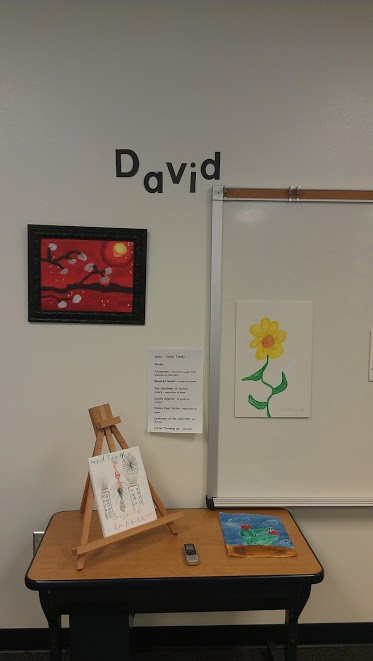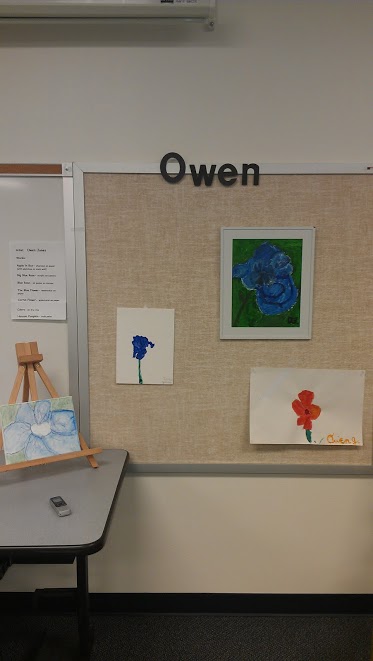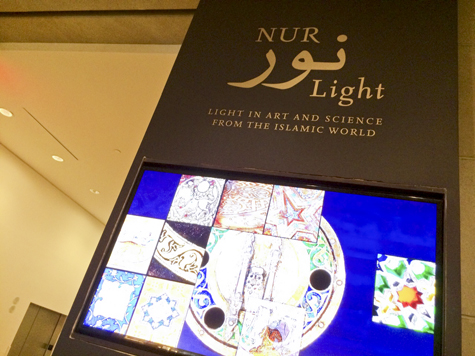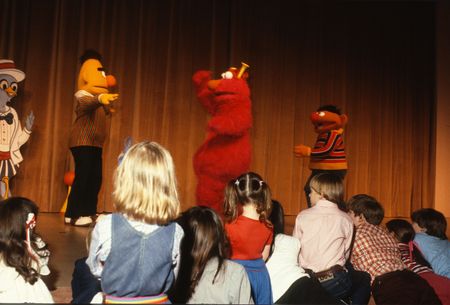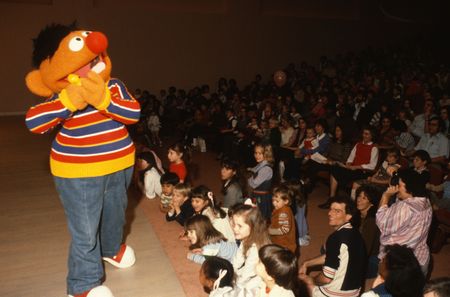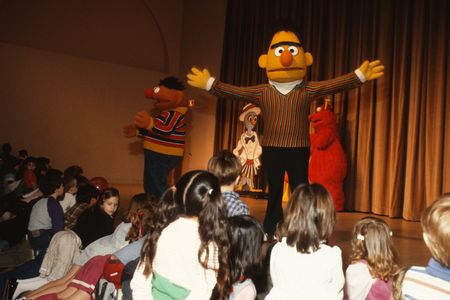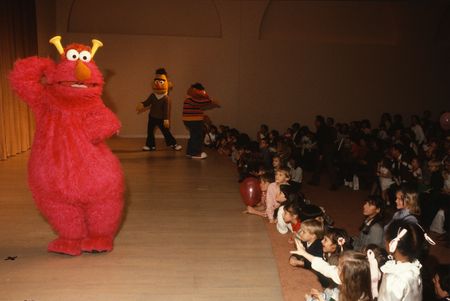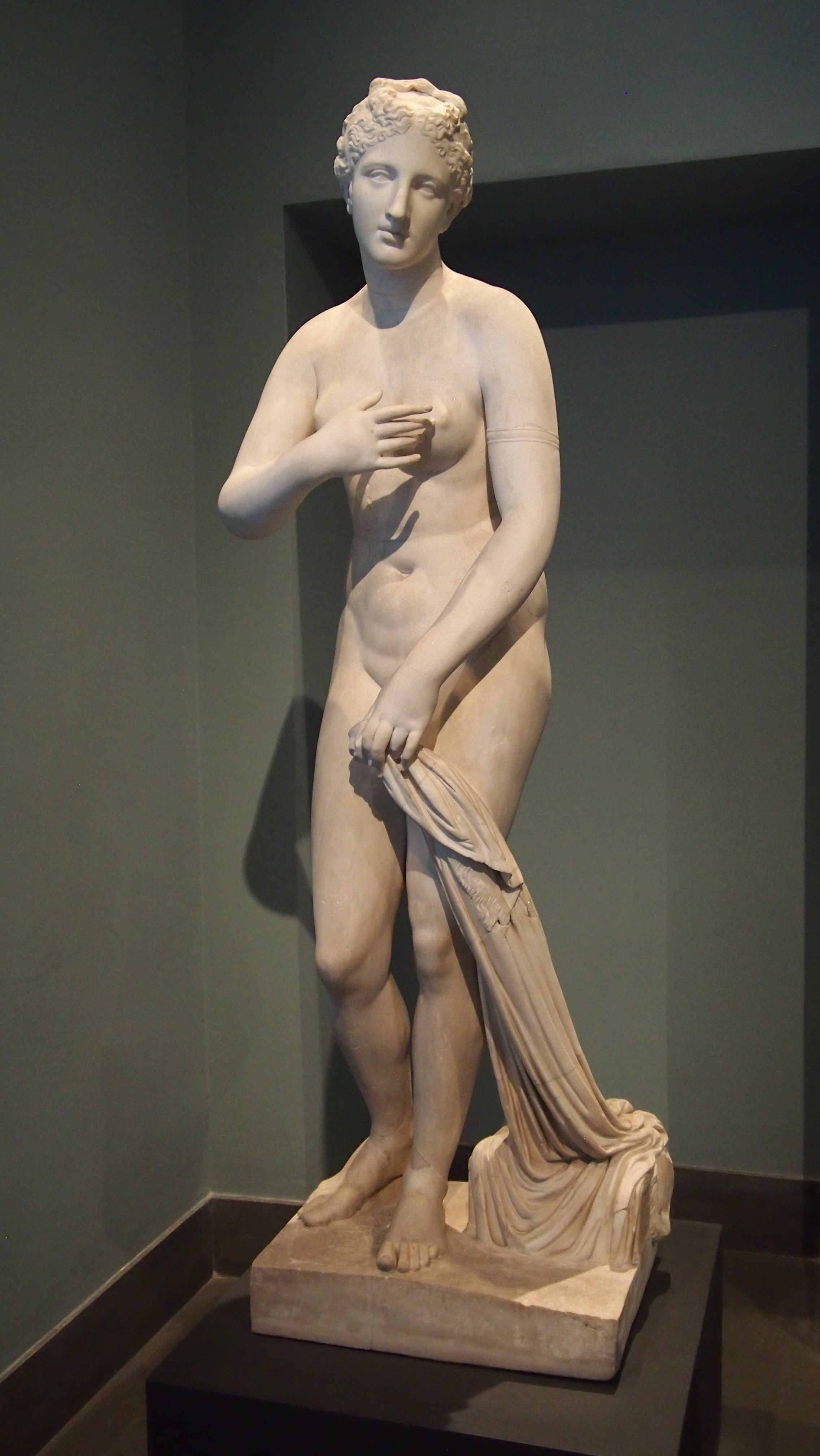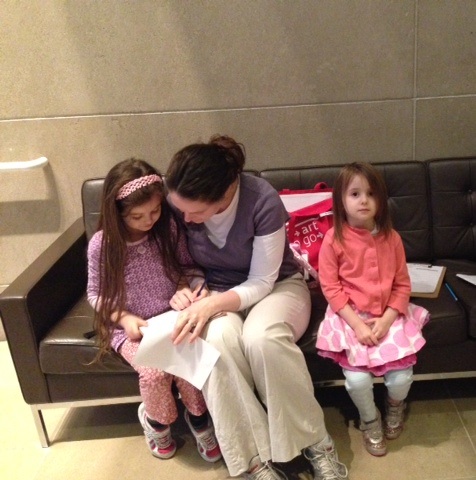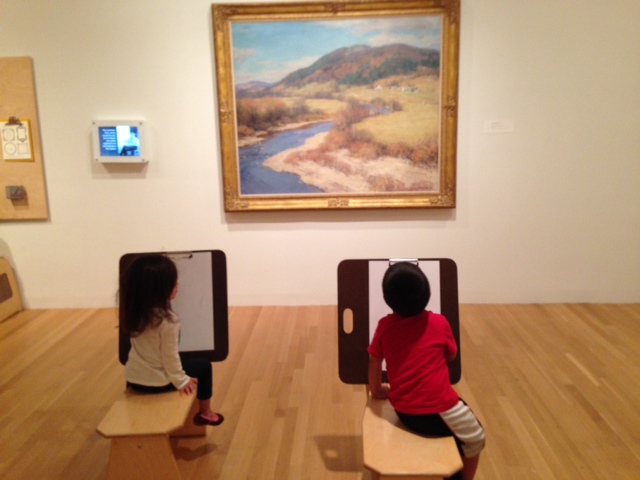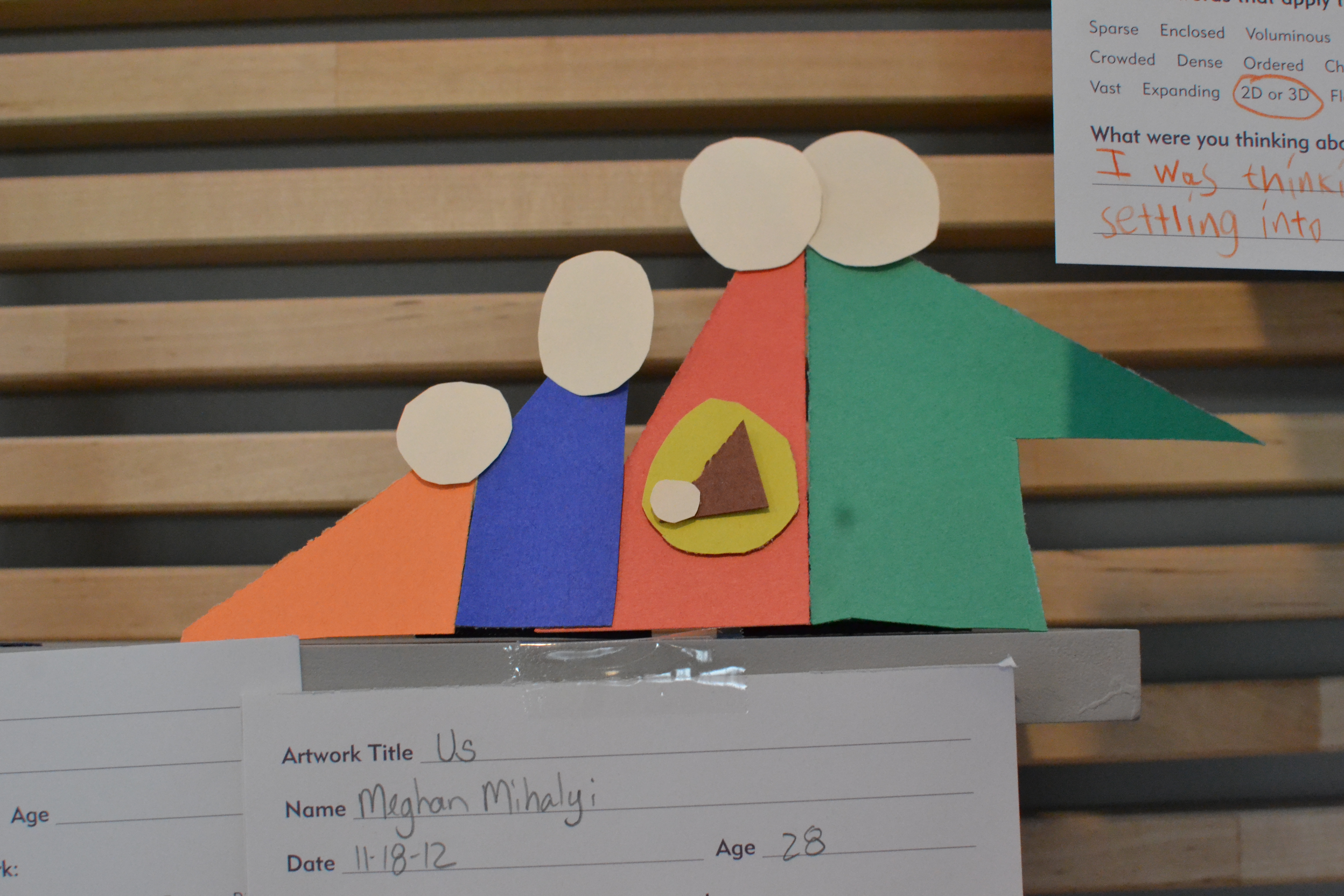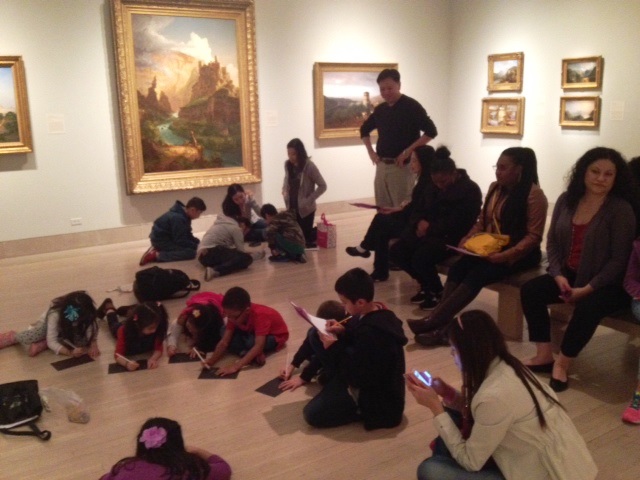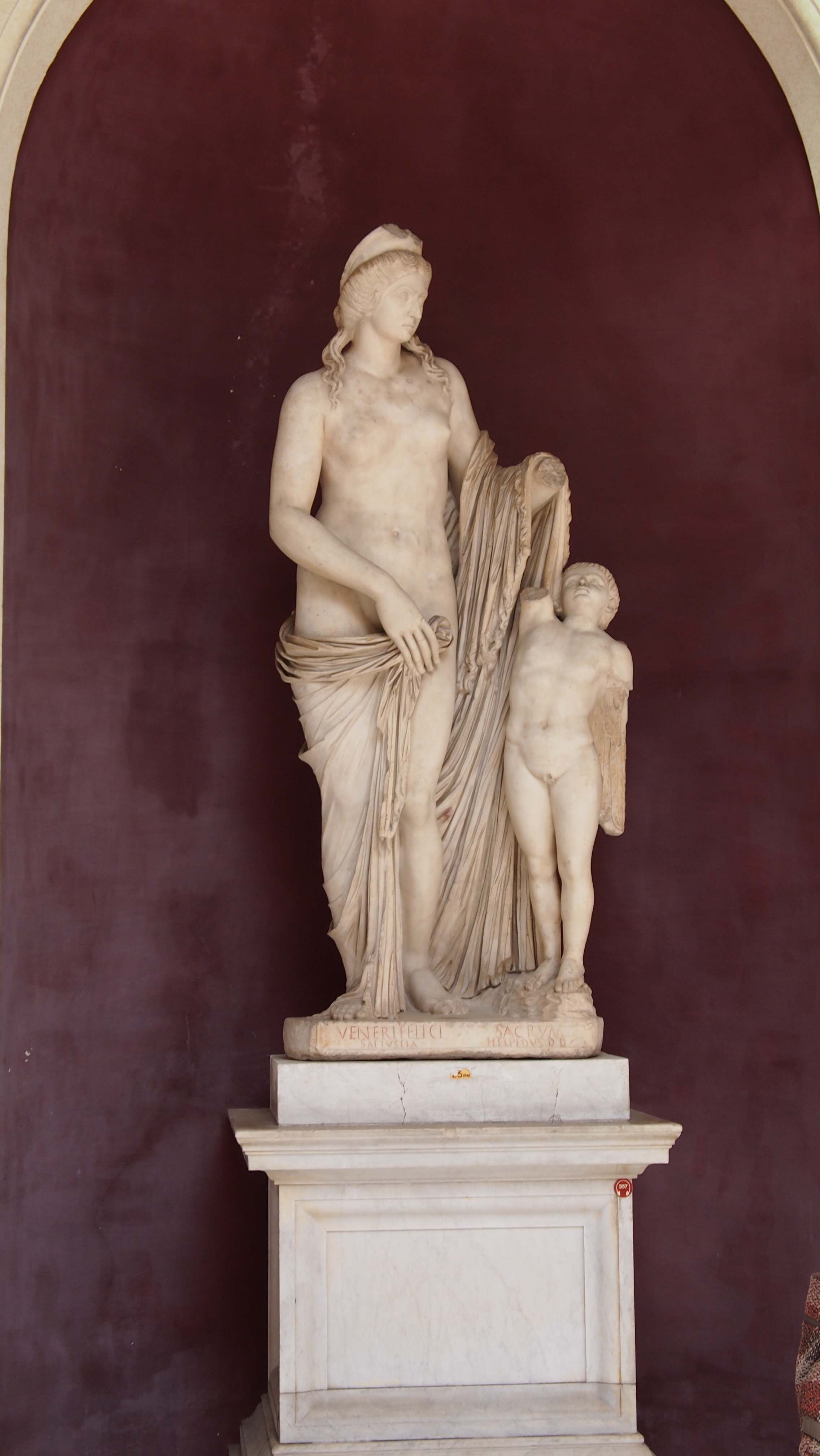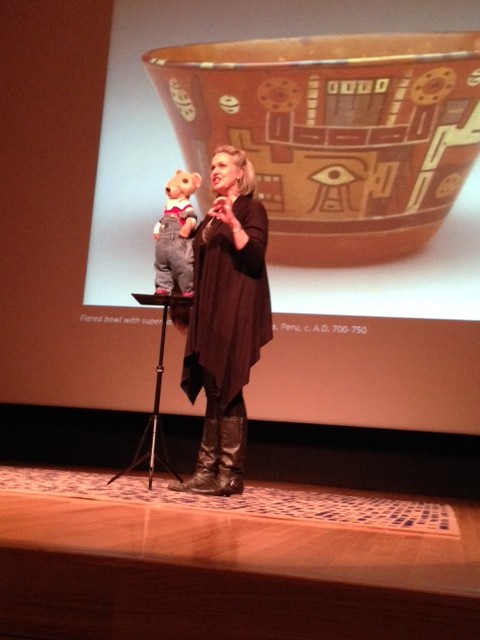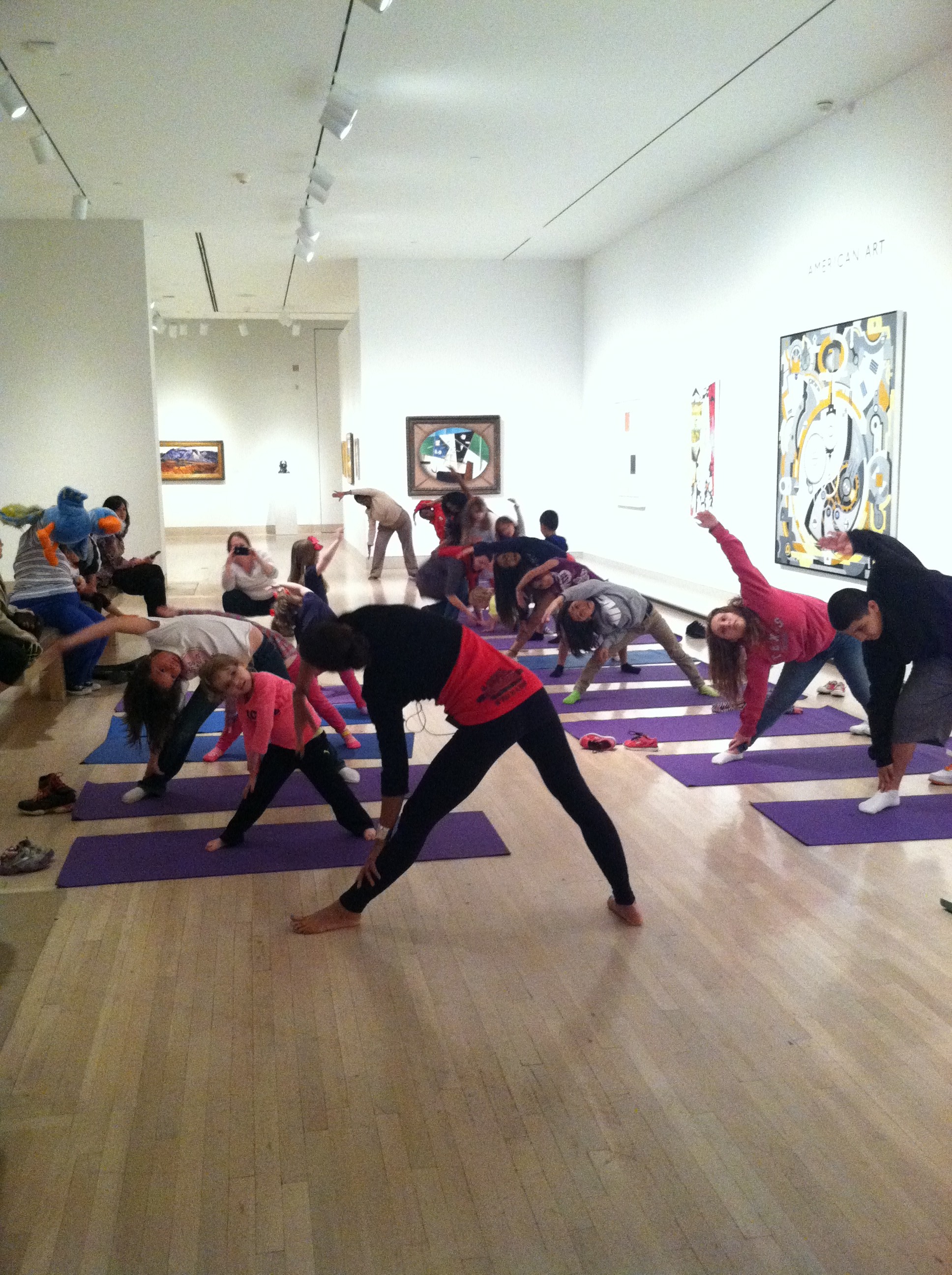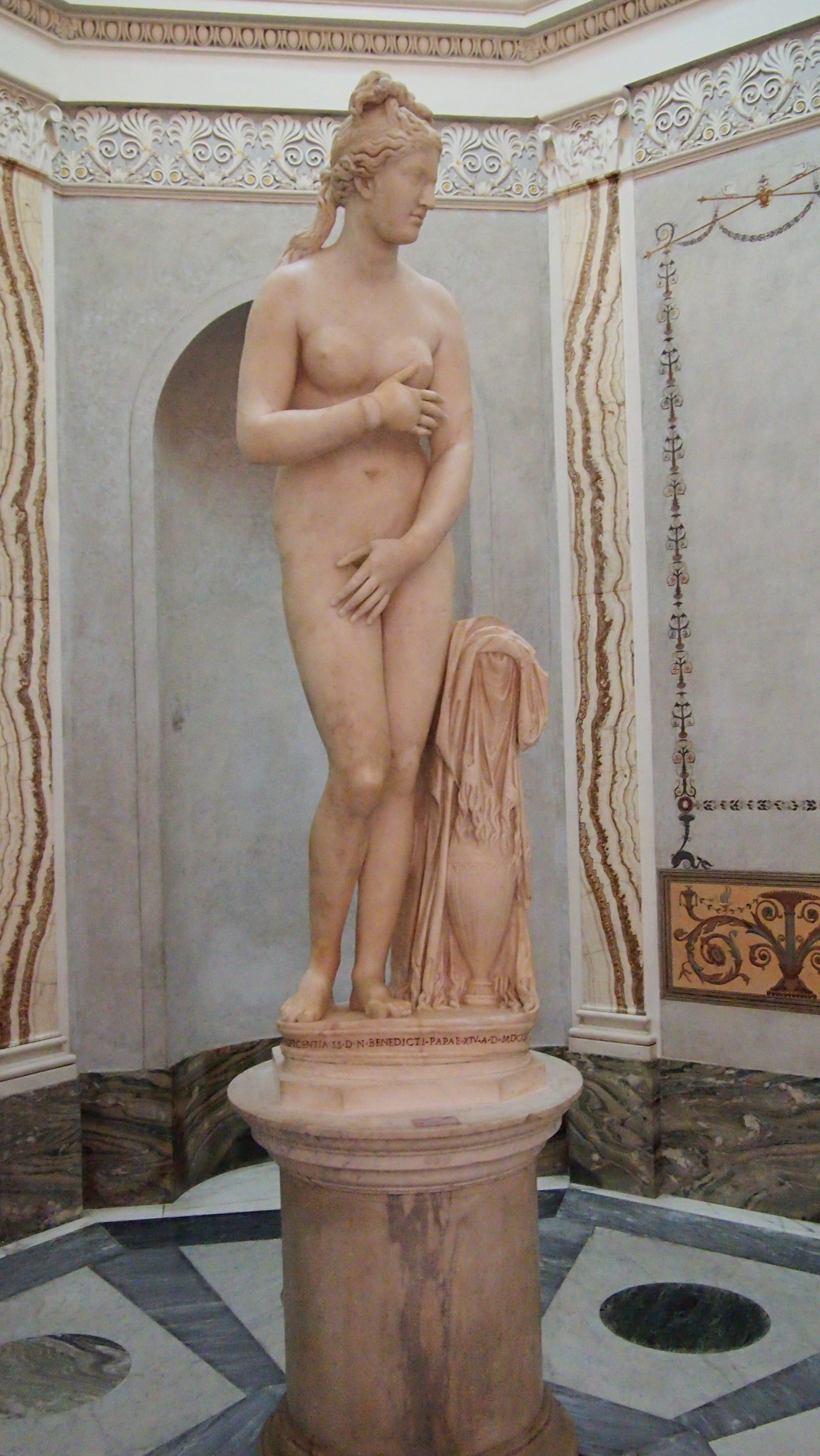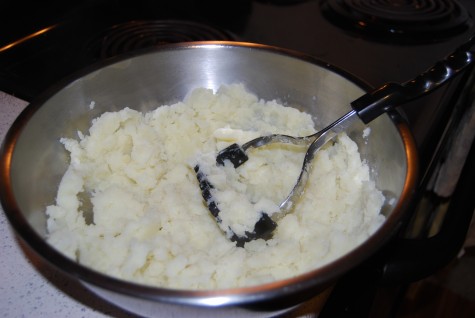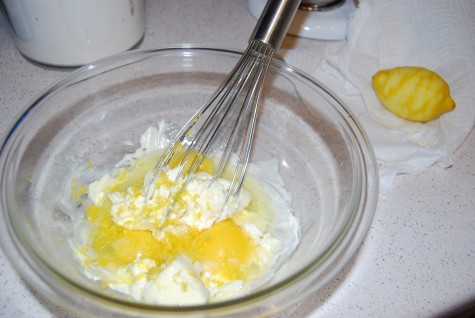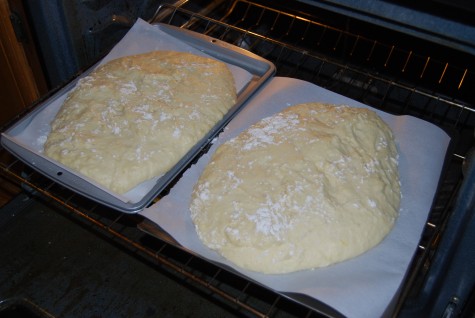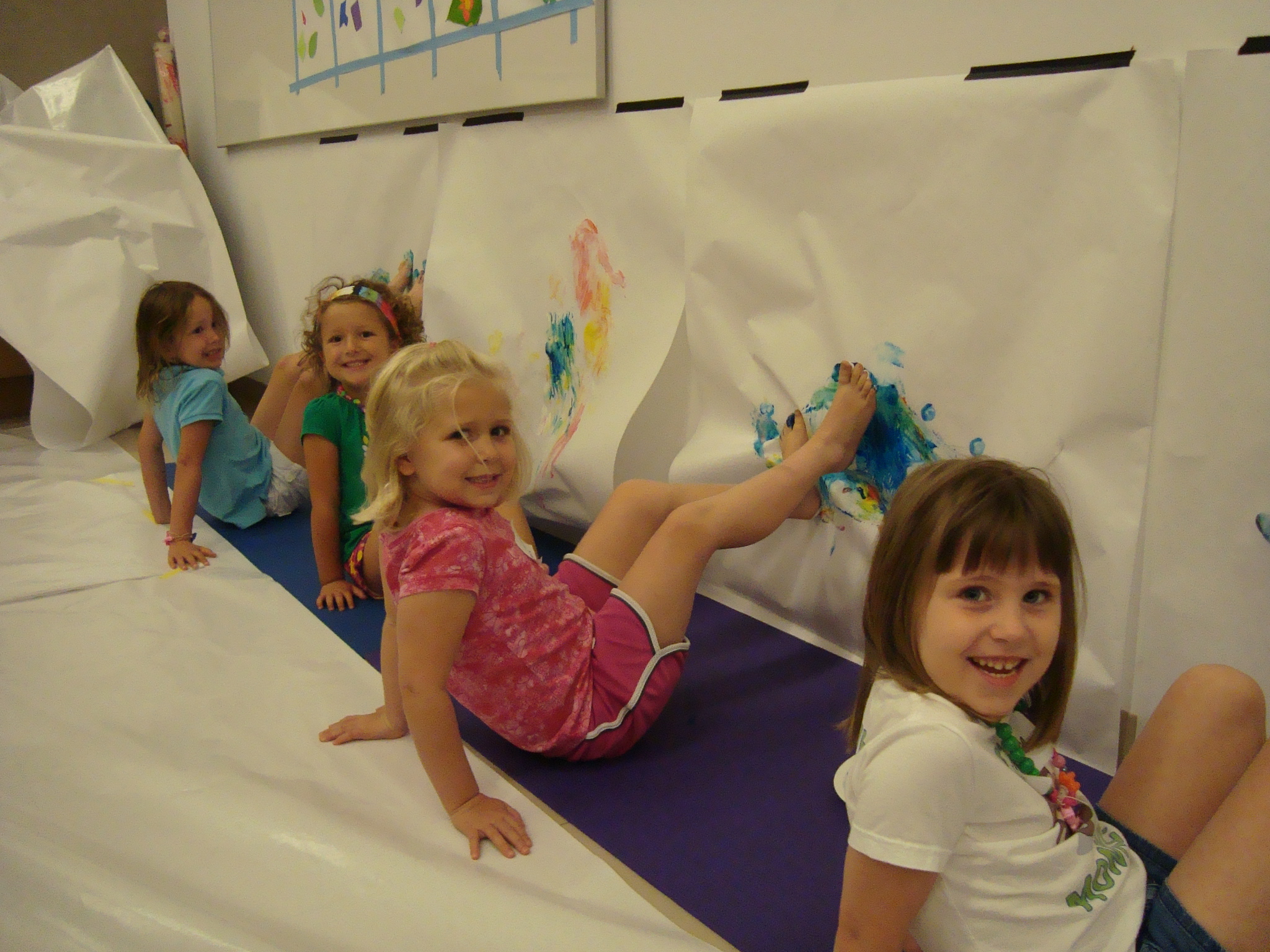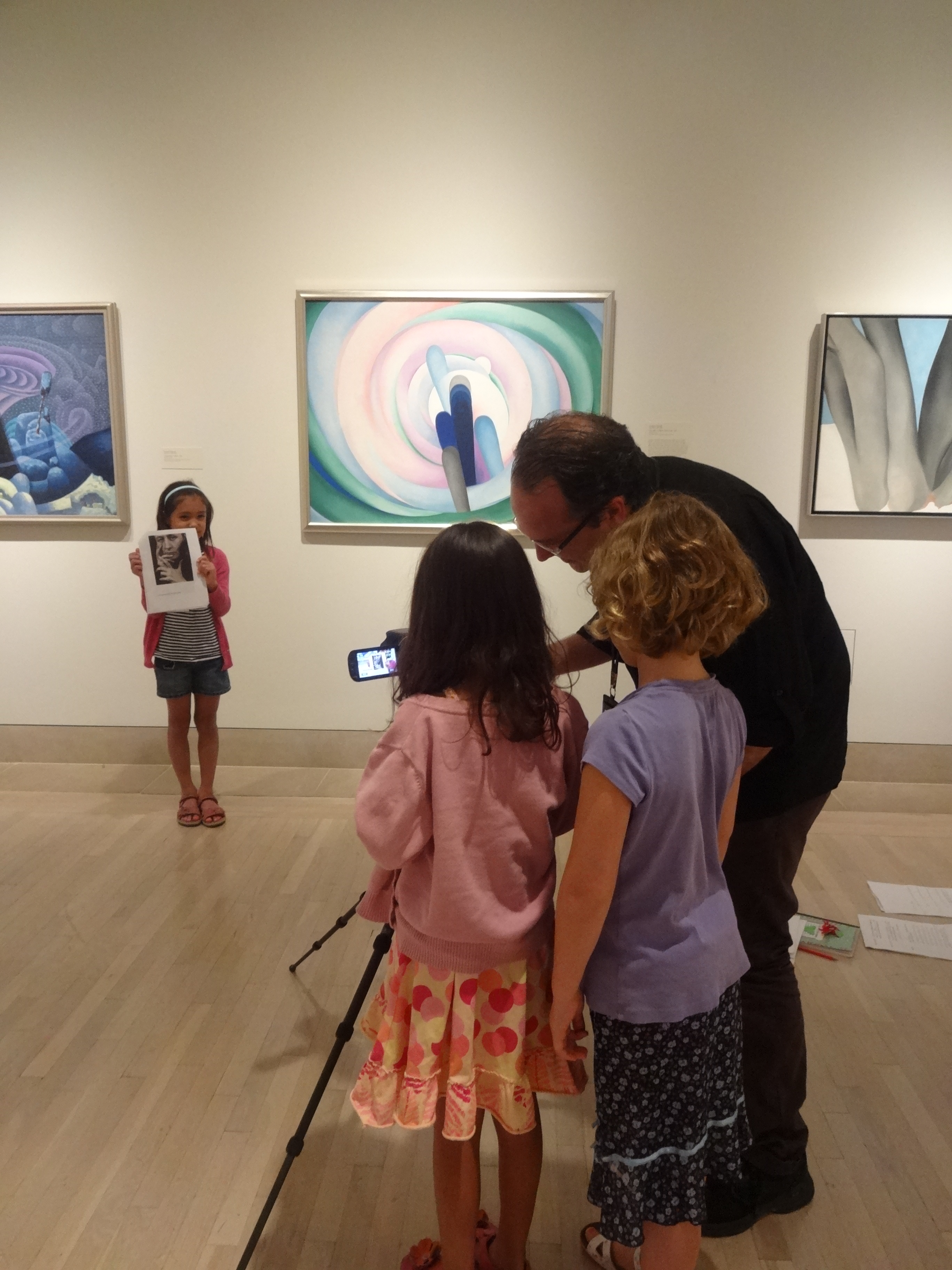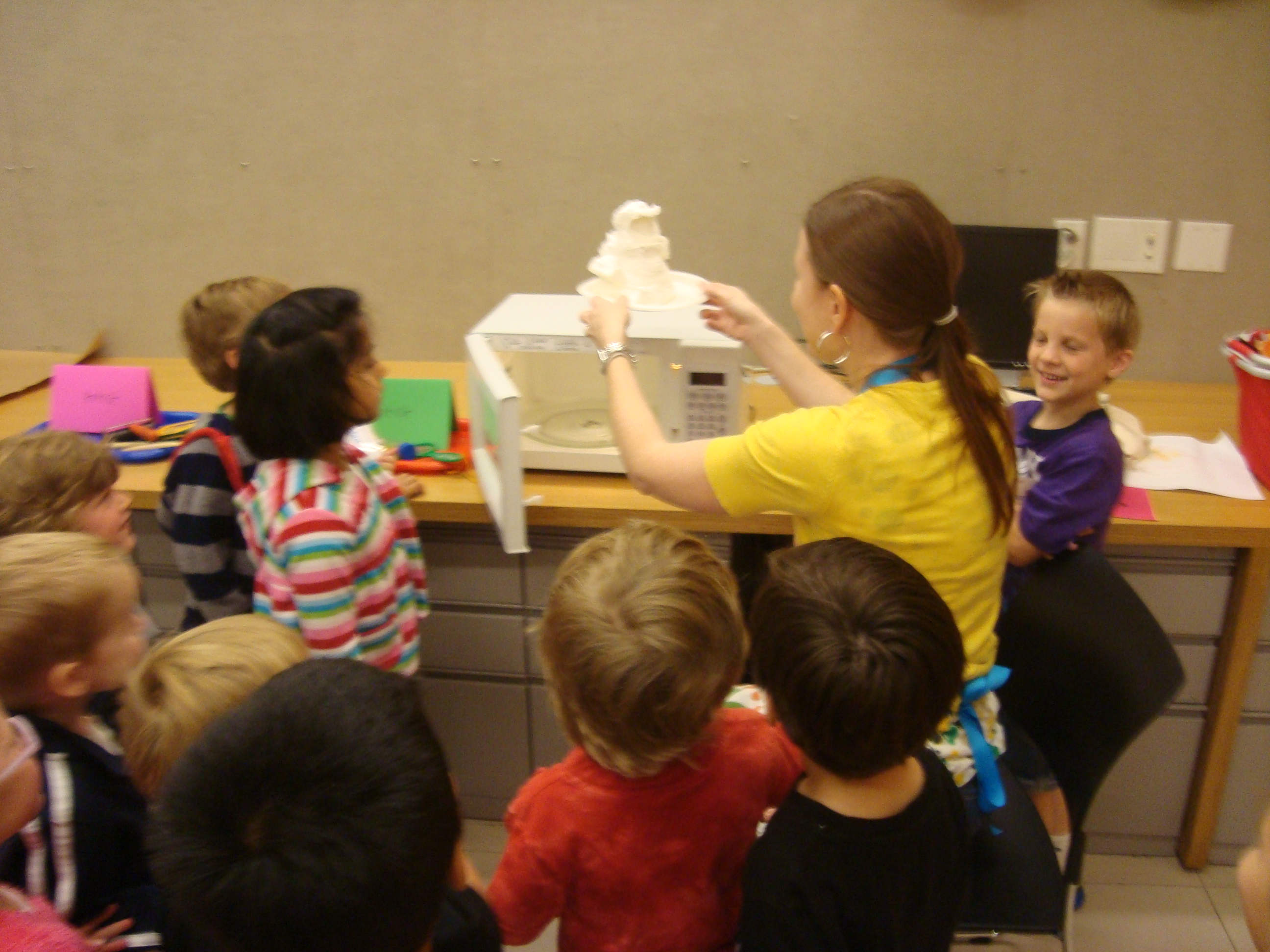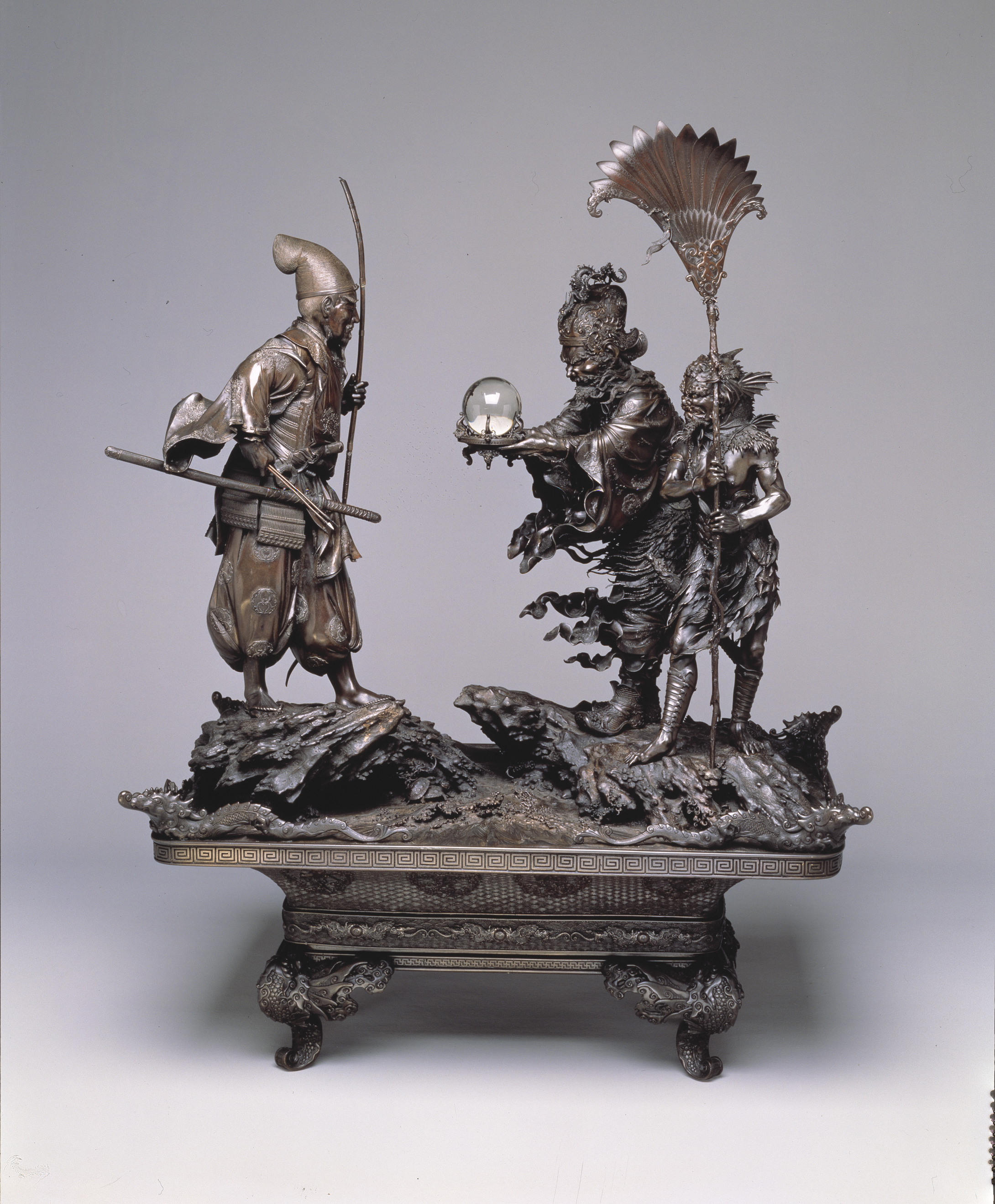We’re cheering on our Texas Rangers during Opening Day!
Archive for March, 2014
Take Me Out to the Ball Game
Published March 31, 2014 Collections , DFW ClosedTags: Dallas Museum of Art, DMA, Major League Baseball, Nic Nicosia, opening day, Texas Rangers
Friday Photos: Turn Your Classroom into an Exhibition!
Published March 28, 2014 Art & Teaching , Friday Photos ClosedTags: classroom activity, exhibition, exhibition design, How-to, student artwork
Last month I had the opportunity to spend an afternoon touring the DMA with four Gifted/Talented students from Bland Elementary. In preparation for an exhibition they were planning at their school, they wanted to learn how museums design gallery spaces, considering decisions such a display, framing, labels, chronology, etc. Ms. Carissa Brophy, the Gifted/Talented teacher at Bland Elementary, recently answered a few questions about this project. We hope the success of her exhibition can inspire a similar project at your school!
- Entrance to the Bland Museum of Art
- Sign-in and welcome
- Charcoal sketches on paper
- Sculptures
- Artist inspiration
- Student gallery
- Student gallery
- Student gallery
How did you develop the idea for a student art exhibition? Is this something you have done in the past?
Ms. Brophy: Students discussed what areas of study we could look at for the year and decided that art was an area our small school could improve upon since we do not have an art teacher at our elementary… The group decided that we could take all of our individual works and create a mini-museum for our school to view. This was a new concept for us.
During the tour, what did your students learn about exhibition design?
Ms. Brophy: My students learned that the space around art can impact the experience of the viewers–small art may need an intimate or small space while large art can fill a large room and be a focal point. Frames can impact the experience of the patron… [and] must match the style so they do not overpower the art. The students [also] learned that you should label artworks to identify medium, type of display mat, artist’s name, year created… and labels should not interfere with the viewing [experience].
What do you think the students gained from visiting the museum? What information did they take away from the experience?
Ms. Brophy: They learned to look at art from different perspectives… They [also] gained knowledge of ways to display collections of art [and] appreciation for other’s art.
How was this new information translated into the exhibition design for your classroom?
Ms. Brophy: We viewed the space in our room with the desire to create flow for our patrons to enjoy all the student-created art, not just stand in one spot.
Are there any elements of the exhibition that you found more successful than others?
Ms. Brophy: Students loved the entire experience [and] parents said they loved the [classroom] museum. We had several comments on the digital tour the artists recorded for their display.
Do you have any suggestions for teachers who want to adapt this idea for their classroom?
Ms. Brophy: Have fun and let the students make it their own!
A huge thank you to Ms. Carissa Brophy and all of her students at Bland Elementary! And congratulations on your wonderful exhibition!
Hayley Prihoda
McDermott Intern for Gallery and Community Teaching
Installing Light
Published March 26, 2014 Behind-the-Scenes , Exhibitions , Lecture ClosedTags: Dallas Museum of Art, DMA, Dr. Sabiha Al Khemir, light, Nur: Light in Art and Science from the Islamic World
Nur: Light in Art and Science from the Islamic World is opening this weekend and the DMA is the only venue outside of Europe to host this exhibition featuring rarely seen objects from around the world. We’ve been preparing for weeks for Sunday’s opening, as you can see in the photos below,
Learn more about the exhibition and the artistic techniques used to enhance the effect of light found in the objects on display in Nur from the DMA’s senior advisor for Islamic art, Dr. Sabiha Al Khemir. And on Thursday, April 3, your lecture ticket will also include admission to Nur: Light in Art and Science from the Islamic World!
Kimberly Daniell is the manager of communications and public affairs at the DMA
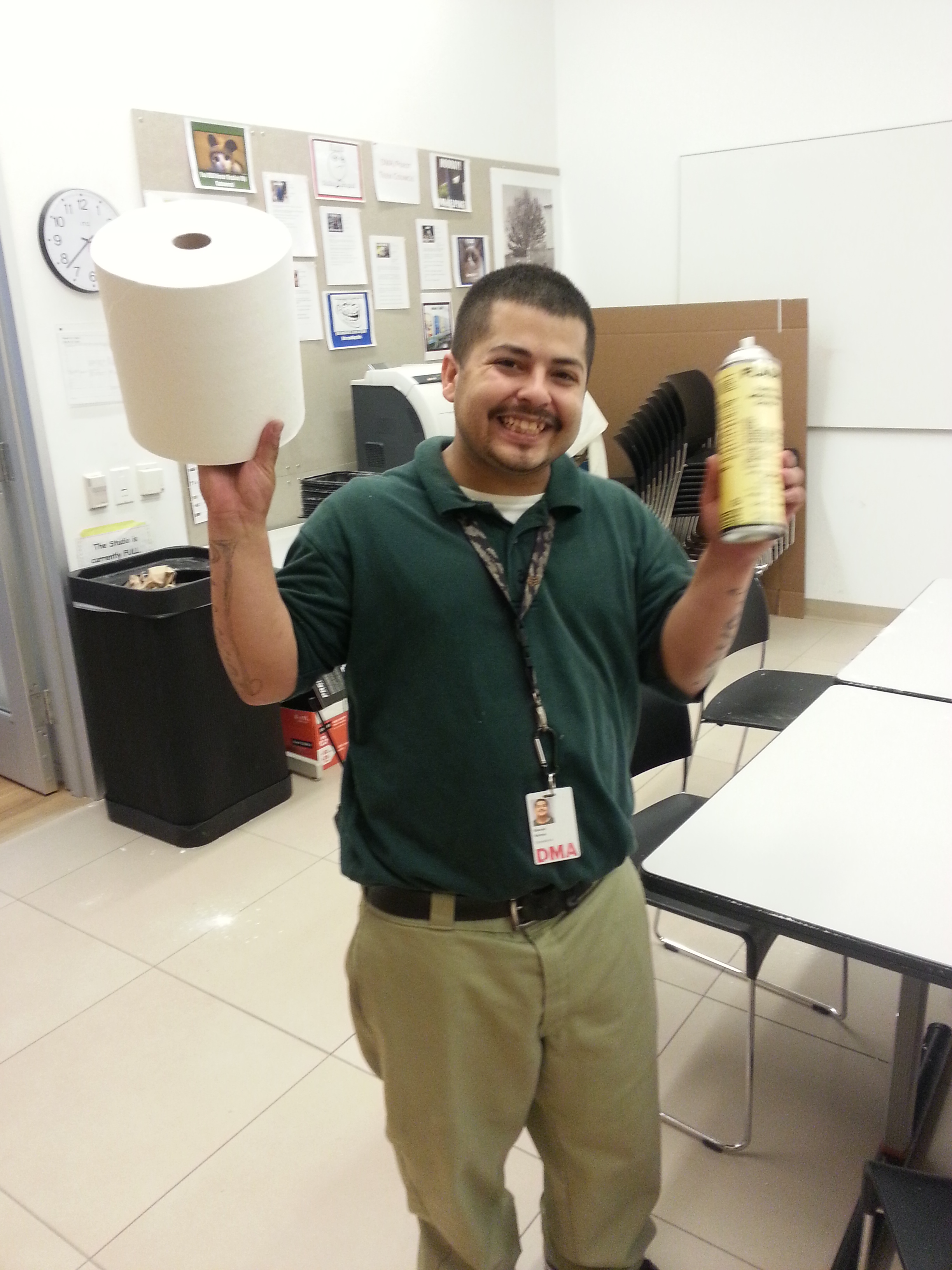
Clean up time is essential to the creative process! All artists must have a place that they can lay out their materials, brainstorm freely, and have room to breathe! No matter if you have ten visitors or ten thousand visitors to your space, it must be cleaned after every project.
It’s important to create plenty of space in your studio for “in progress” works; have drying racks to get things out of the way when cleaning or preparing for another project; and do all you can for others to have a quality experience in your space. Build in time for set-up and clean up when working on a project or leading a workshop–this will save you in the end.
Research suggests that all people, including creative types, need to ditch the clutter. What does clutter do? Dunh, Dunh, Dunh… According to Pyschology Today:
- Clutter bombards our minds with excessive stimuli (visual, olfactory, tactile), causing our senses to work overtime on stimuli that aren’t necessary or important.
- Clutter distracts us by drawing our attention away from what our focus should be on.
- Clutter makes it more difficult to relax, both physically and mentally.
- Clutter constantly signals to our brains that our work is never done.
- Clutter makes us anxious because we’re never sure what it’s going to take to get through to the bottom of the pile.
- Clutter creates feelings of guilt (“I should be more organized”) and embarrassment, especially when others unexpectedly drop by our homes or work spaces.
- Clutter inhibits creativity and productivity by invading the open spaces that allow most people to think, brain storm, and problem solve.
- Clutter frustrates us by preventing us from locating what we need quickly (e.g. files and paperwork lost in the “pile” or keys swallowed up by the clutter).
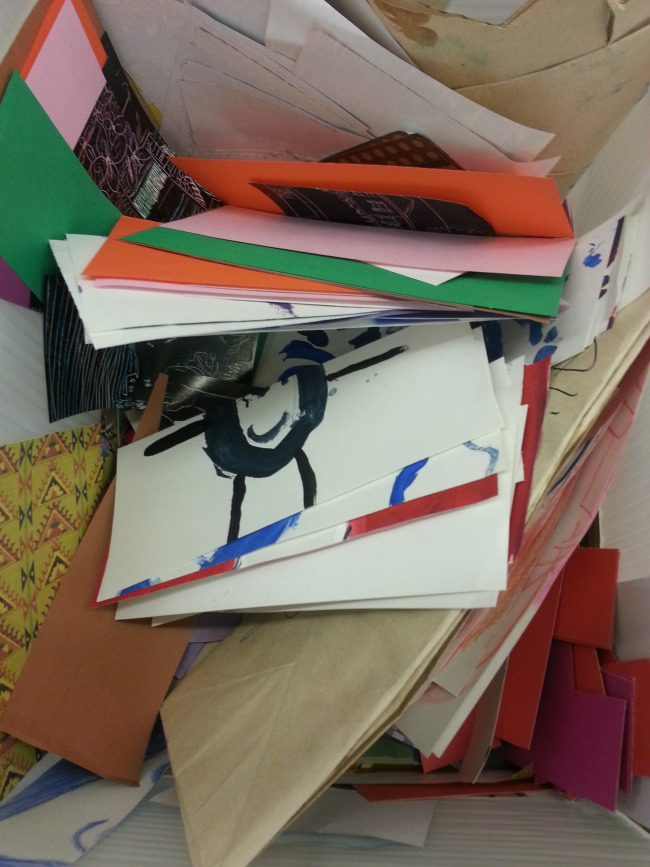
Everything has a place!
Experts suggest that you create designated spots in your art room or studio for frequently used items and supplies. Keep them in a cabinet that is convenient and spacious so that you can quickly and easily find what you’re looking for when you need it. This extra effort at organization will help you avoid frustration and any unnecessary trips to the art store.
Make sure that when you take something out of its space for a creative moment, you’re diligent to put it back immediately after you’re finished with it. What you don’t put away–you’ll lose for another day! Sounds simple, but it actually takes practice and commitment. No good thing comes without practice!
Look at these awesome before and after shots!
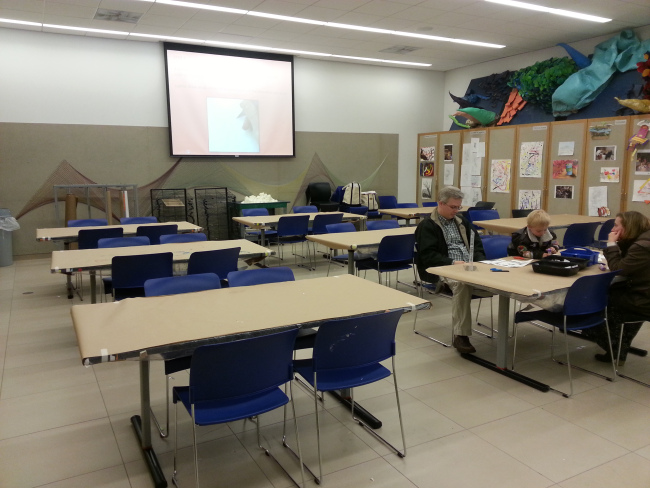
Before
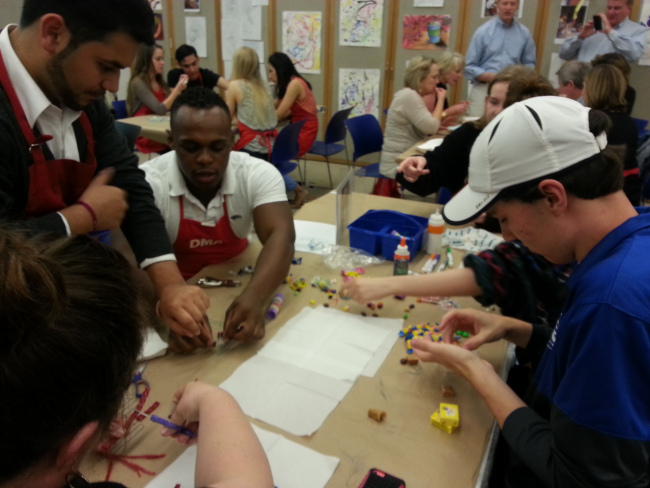
During
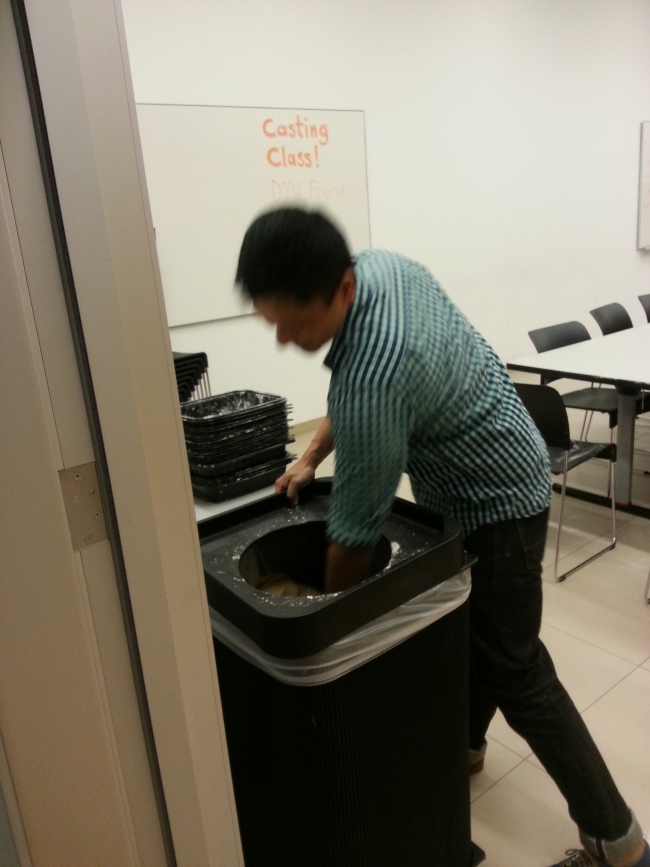
Clean Up
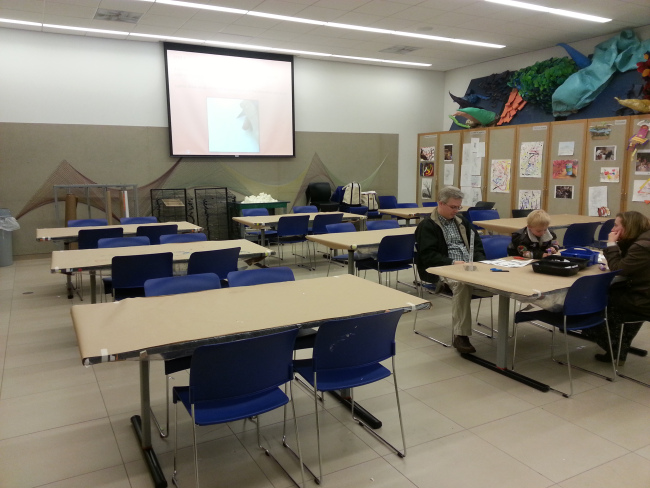
After (Leave it like you found it) 🙂
Stay clutter free this spring!
Amanda Batson
C3 Program Coordinator
ARTifacts: Harwood Street Meets Sesame Street
Published March 24, 2014 Archive ClosedTags: Dallas Museum of Art, DMA, Sesame Street
Did you know—or remember—that a few special Sesame Street residents came to the DMA? Bert, Ernie and friends joined the celebration for the new downtown Museum by entertaining our youngest visitors on opening day, January 29, 1984.
Hillary Bober is the digital archivist at the Dallas Museum of Art.
Nothin’ Beats the Cookie Season, and That’s the Truth
Published March 21, 2014 Arts & Letters Live , Guest Blog Post 1 CommentTags: Arts & Letters Live, B.J. Novak, Dallas Museum of Art, DMA
It wasn’t enough that I had purchased a flight to Dallas that arrived and departed within the same 24 hours just to see B. J. Novak at the DMA’s Arts & Letters Live event; I knew that if I wanted to thank B. J. Novak properly, I had to do just a bit more.

As an avid baker, the decision to make him cookies wasn’t a difficult one. After deciding to theme the cookies after stories from his book, I started planning. I spent hours at kitchen stores gathering supplies and ingredients; two days before I left, I started on the big project. With minutes to spare until I had to leave my home in Utah to catch my flight, I finished them. Wrapped securely in bubble wrap and placed in a box fashioned like the book jacket for One More Thing, I lugged them through the airport.

After a couple of stressful layovers, I was finally in Dallas! At the hotel, I met my friend Cherokee, who traveled from Oklahoma. We made our way to the Museum, even though it was early, Having traveled so far, we didn’t want to take the chance of getting “bad” seats. The entire day, my stomach was in knots, not only at the thought of being in the same room as someone I’ve long admired, but also about how my gift would be received. I remember relaying my story to a few individuals, Before I knew it, pictures were being sent to his publicist and the knots in my stomach got even tighter. When Cherokee and I were let inside the auditorium, we sat up front and center, not thinking it’d get any better.
After a few minutes, a woman with the Museum’s Arts & Letters Live series approached us and asked if we had the cookies. Assuming she wanted to see them, I pulled them out. She kept talking but all I remember were my eyes glazing over when she said, “He wants to invite you backstage.” Nervously, we followed her to a holding room, knocked on the door, and from around the corner came B. J. Novak.
For the next twenty minutes, words like “blown away” and “impressive” escaped his mouth to describe my cookies. I was in awe. He had learned about my travels and went on to ask what I did for a living, why I chose Dallas, and where I learned to bake. B. J. and the other guests in the room were very gracious toward me—this fan that I’m sure was coming across as a nervous mess. He indulged my requests for pictures and took many himself. We talked a bit more with him about his career and thanked him for taking time out for us, and then it was time for the event to begin.
We took our seats and B.J. killed it onstage, doing readings and answering questions from the audience. Rounding off this perfect evening, he signed our books and I was sent floating home with a hug and thanks for “making his day.”
At most I wanted him to think the cookies were fun. NEVER did I think they would receive this type of reception. B. J. Novak has inspired a lot of happy memories for me; the projects he’s contributed to have influenced relationships and formed bonds. Most recently, his book has been a light during a difficult time in my life. To borrow his words, I continue to be “blown away” by what happened. I chose Dallas because it was closest, but I see now that I wouldn’t have had this experience if it weren’t for the unbelievably kind staff at the DMA. My sincerest thanks to all involved—it meant more than I could ever put into words.

Click here to discover where our title inspiration came from.
Jen Jake is a manager at a group home for adults with mental disabilities in Utah and an avid B. J. Novak fan.
Friday Photos: Spring Break Block Party
Published March 21, 2014 Family Fun , Friday Photos ClosedTags: basketball, Championship, Final Four, March Madness, NCAA, spring break
Last Friday, spring breakers of all ages had a ball at the DMA during the Dallas Arts District Spring Break Block Party. The evening was inspired by our week-long Art Madness programming, featuring basketball themed tours, performances, and interactive art-making experiences. Check out some of the highlights of the evening here:
- Venus, Palazzo Massimo alle Terme
- Families were invited to check out our new Art To-Go Family Totes.
- Young visitors dreamed of far away spring break destinations.
- Art Madness themed tours in the galleries.
- Venus Felix, Pio-Clementine Museum, Vatican
- Nancy Worcester provided a slam dunk performance in Horchow Theater.
- Spring breakers stretched their bodies during yoga in the galleries.
- Capitoline Venus, Capitoline Museum
Amelia Wood
McDermott Intern for Family and Access Teaching
Culinary Canvas: Mini Blueberry Tarts
Published March 20, 2014 Culinary Canvas ClosedTags: blueberry, cooking with kids, Fruit, recipe
You can find this stunning silver centerpiece, created for the 1964 New York World’s Fair, on the fourth floor in our Formed/Unformed exhibition. Its delicate central shape is made up of 19 clusters that burst forth with 7 sapphires each. This month’s recipe is also studded with little blue gems, though these are of the berry variety. And while they don’t include such precious materials as our Celestial Centerpiece, these mini treats will certainly serve as the perfect centerpiece for your next party–delighting your guests with their bursting blueberry flavor!
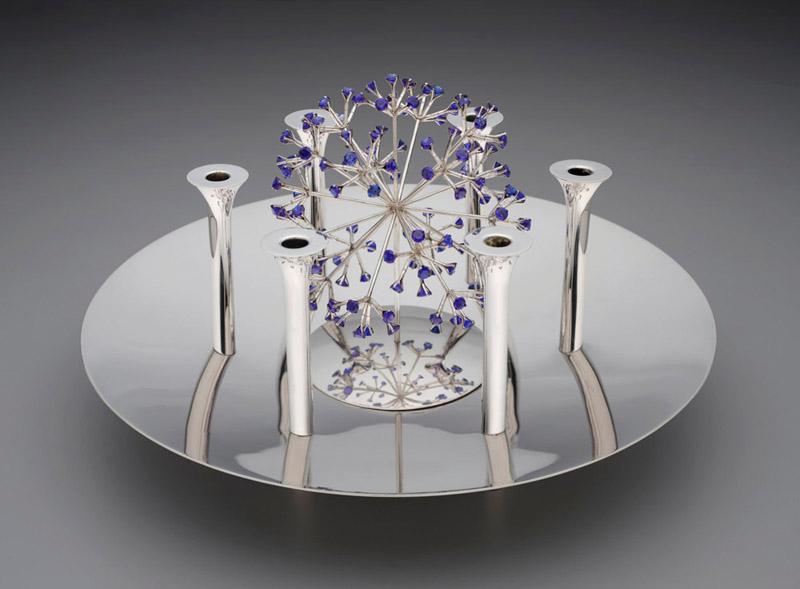
Celestial Centerpiece, 1964, Robert J. King, designer, Dallas Museum of Art, The Jewel Stern American Silver Collection, acquired through the Patsy Lacy Griffith Collection, gift of Patsy Lacy Griffith by exchange and gift of Jewel Stern in honor of Kevin W. Tucker
Mini Blueberry Tarts
Yields 30 tarts
Level: Very Easy
8 ounces cream cheese, room temperature
½ cup powdered sugar
1 teaspoon vanilla extract
30 frozen mini phyllo shells
1 pint fresh blueberries, rinsed and dried
Coarse sugar (optional, for sprinkling)
In the bowl of a stand mixer fitted with whisk attachment, beat cream cheese and sugar at medium speed. Add vanilla extract and continue whisking until fluffy. Using a rubber spatula, transfer filling mixture to ziploc bag. Press filling into one corner, leaving enough room to hold bag without overflowing contents.
Arrange phyllo shells onto work surface. Snip corner of bag and squeeze filling into each shell, leaving space at top. Cover filling with 4-5 blueberries and sprinkle tops with coarse sugar if desired.
Refrigerate tarts in air tight container and serve chilled. Consume within 2 days.
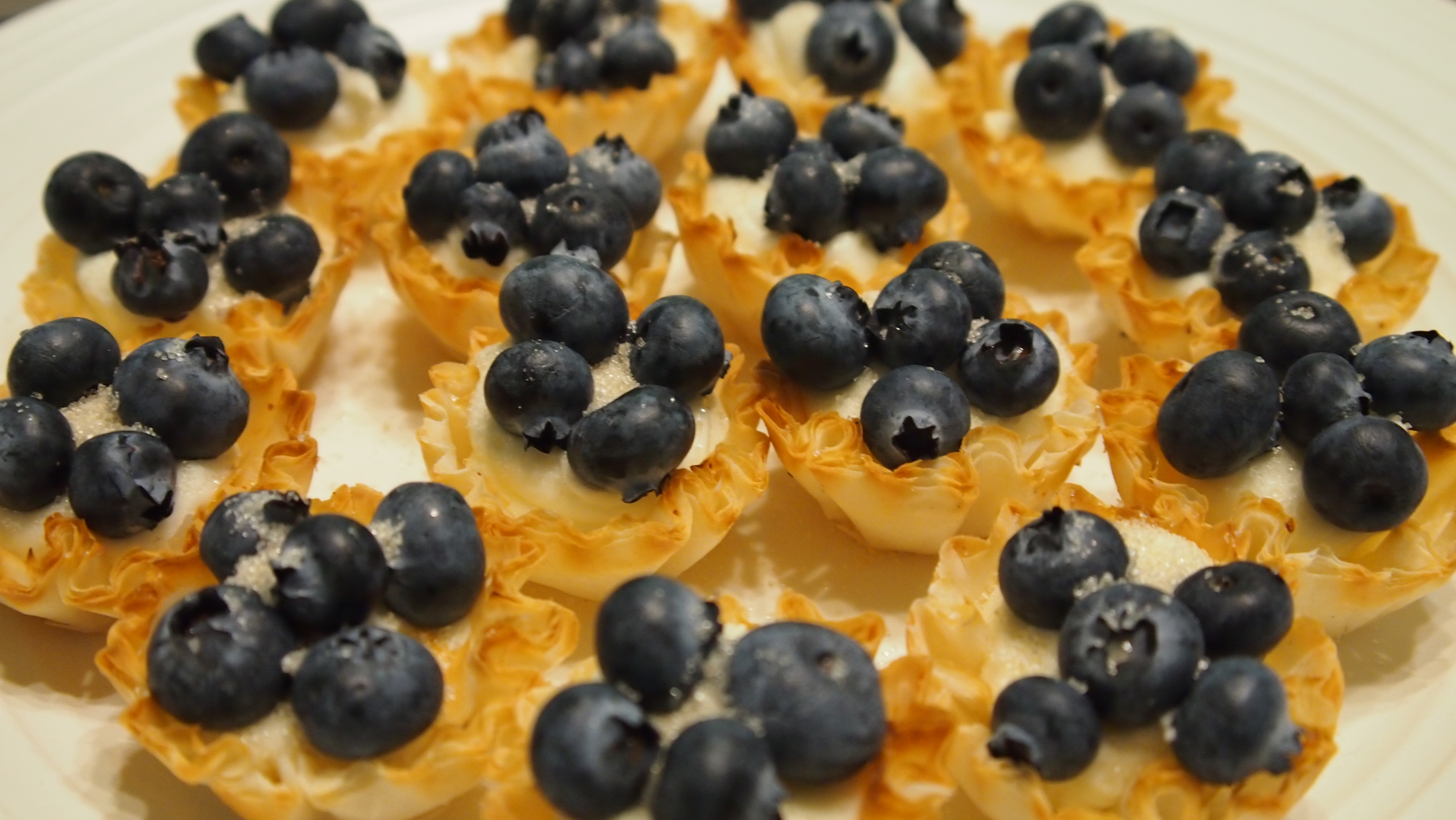
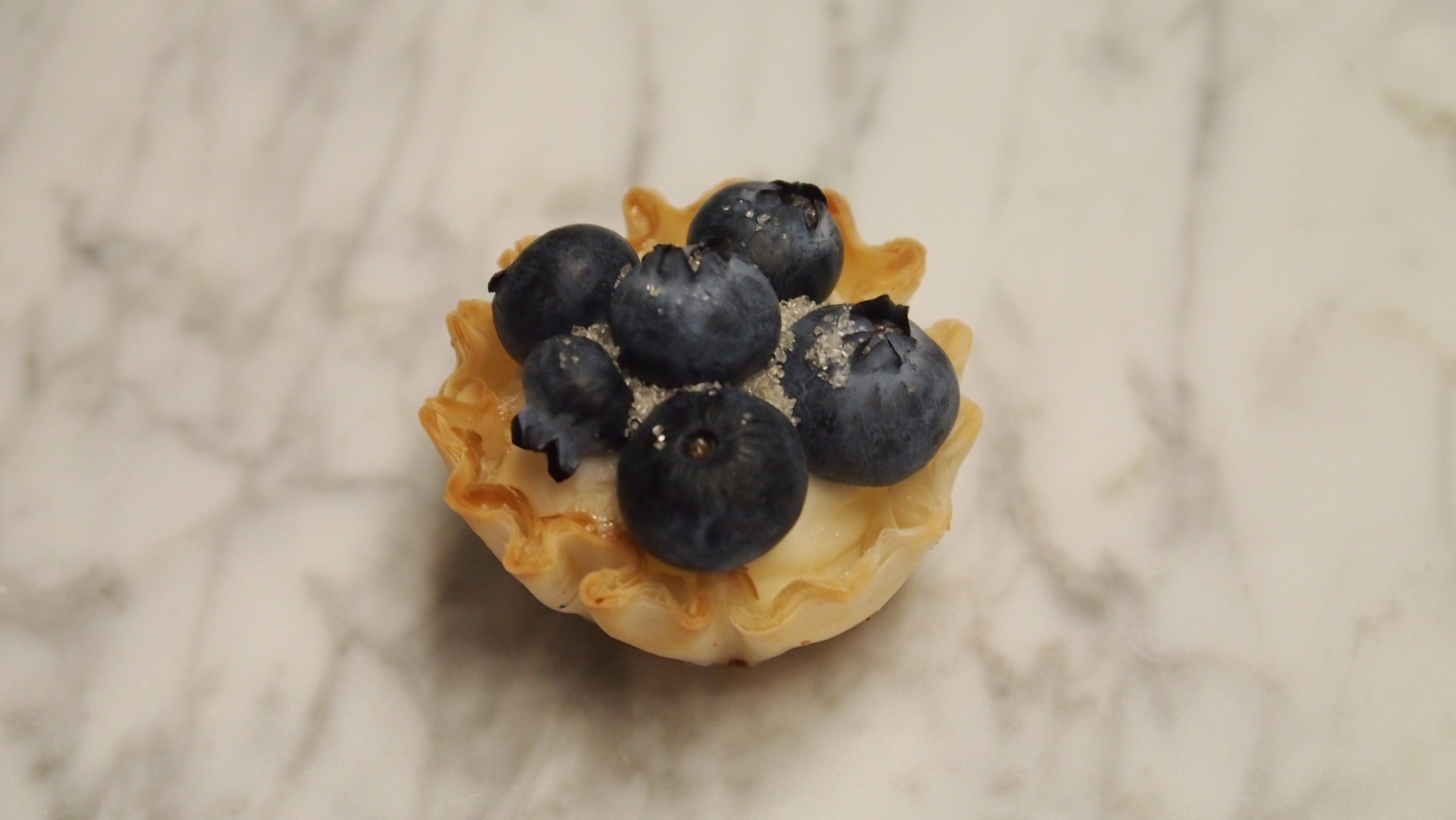
Original recipe.
Sarah Coffey
Assistant to the Chair of Learning Initiatives
Savor the Arts: A Kitchen Adventure
Published March 19, 2014 Late Nights , Lecture , Special Events , Staff , Uncategorized 1 CommentTags: Almond Cookies, Brecht’s Favorite Potato Bread, Claude Monet, cooking, Dallas Museum of Art, DMA, Dr. Mary Ann Caws, Pablo Picasso, Spanish Omelette, The Modern Art Cookbook
This Friday, cookbook author and professor of comparative literature Dr. Mary Ann Caws will be here to discuss her book The Modern Art Cookbook during our Savor the Arts Late Night event.
The Modern Art Cookbook is equal parts art historic document and recipe guide, illuminating the relationship between art and food. In preparation for this event, the DMA’s programming team decided to try some recipes from the book to see what they were like (and to test their kitchen skills).
Betsy Glickman, Manager of Adult Programming:
I have always been a fan of the “breakfast for dinner” concept, so I opted to tackle an egg-based dish from the book. Armed with a minimal set of ingredients—and an even more minimal set of cooking skills—I set aside an evening to bring Pablo Picasso’s Spanish Omelette to life in my kitchen. I originally thought the dish would resemble a traditional, half-plate-sized omelette, but as I laid out the ingredients (10 eggs, 4 potatoes, 2 onions, etc.), I realized this was going to be much larger.
I began by peeling and slicing the potatoes and onions. I then tossed them into a large pan and sautéed them for about 15 minutes. While they were cooking, I beat the eggs in a large mixing bowl.
Once the potatoes and onions were beginning to brown, I drained them on some paper towels to help absorb the excess moisture. I then added them to the salad bowl along with a large helping of salt and pepper.
Next it was time to make the omelette. I pulled out the best nonstick pan I own, added some olive oil and medium heat, and poured in the contents to cook for several minutes.
As the edges began to firm up, I realized the hardest part of the process was yet to come: I somehow had to flip this thing over. I snagged a plate for assistance, and, in a swift movement, transferred most of the contents to the plate and back into the pan. All in all, I’d give my flip an 8 out of 10.
I cooked the omelette for another 2-3 minutes. The book instructed to leave the center a little runny, but, unfortunately, I overcooked it a bit. Even so, the end result was quite tasty. Viva el Spanish Omelette!
Things I learned: It’s difficult to ruin an omelette, but there are endless ways to make it better. In the future, I may try adding tomatoes, peppers, and/or salsa to this recipe.
Stacey Lizotte, Head of Adult Programming and Multimedia Services:
I decided to make Brecht’s Favorite Potato Bread because I have always been interested in mastering a bread recipe (yeast and rising dough have always been a bit of a mystery to me). This recipe called for one cube of yeast, which I should have researched before picking this recipe. I tried finding a conversion from cubed yeast to dry yeast and was not successful, so I went with one packet of dried yeast for the recipe. Because dry yeast needs to be activated with water, I reduced the amount of oil recommended.
Even with that reduction, my dough was very wet. After adding an additional cup of flour it was still not the texture I thought it should be. But having little experience with bread, and thinking that the mashed potatoes probably added moisture, I thought maybe that was how it was supposed to be.
While the dough did rise, as you can see from the photos the dough did not hold its shape once formed into “loafs.”
While the look of the bread left much to be desired, I found the flavor interesting, which I attribute to the lemon zest.
Things I learned: Yeast used to come in cubes. I will add lemon zest to any future bread dough recipes I try.
Liz Menz, Manager of Adult Programming:
The last time we all got together for a cooking blog, I went with soup, so this time I ventured into the realm of desserts. I decided to make Claude Monet’s Almond Cookies. The recipe is much like a shortbread recipe, so there were very few wet ingredients and (something I discovered halfway through) the dough required kneading.
Combining the flour, confectioner’s sugar, ground almonds and lemon rind into a bowl with the eggs was the easy part. Realizing that the cubed butter was still needed, I figured out that my wooden spoon was not going to cut it, so kneading was the way to go!
After some work (and one phone call to my mother), I realized I was doing this right, as the dough finally came together. It was on to rolling out the dough and cutting the cookies! I am a less-than-prepared baker and discovered that, in a pinch, a wine bottle doubles well as a rolling pin and wine glasses are the perfect size for cutting!
After I sprinkled the cut cookies with sugar and sliced almonds, they went into the oven for about 20-25 minutes. They came out golden and yummy! The lemon rind really gave them a great flavor, and I decided that these cookies would be great with a cup of coffee and a book.
Things I learned: Shortbread-type recipes are harder than they look, but worth it. Lemon rind is a great addition to cookies. Also, thanks Mom.
Don’t forget to join us on Friday as we savor the arts! And, for more fun food-inspired posts, peruse the Culinary Canvas section of our Canvas Blog.
Betsy Glickman is a manager of adult programming at the DMA.
Stacey Lizotte is head of adult programming and multimedia services at the DMA.
Liz Menz is a manager of adult programming at the DMA.
Calling all Happy Campers!
Published March 18, 2014 Camps and Classes , Family Fun ClosedTags: animation, Art, Design, fashion, internship, painting, photography, Science and Art, storytelling, Summer Art Camp, summer camp intern
Are you dreaming of lazy days at the swimming pool, sunburned noses, family vacation, and popsicles? We are! Summer is officially 95 days away, but we won’t be spending it at the neighborhood pool. For those of us who coordinate Family Programs at the DMA, summer means one thing—Summer Art Camp! And this year’s line-up of camps has something for every creative kid. Whether you are a junior shutterbug, fashionista, sculptor, painter, designer, musician, actor, or inventor, there’s a summer camp for you.
I have been teaching summer camps at the DMA for five years now, and I’m 95 percent serious when l tell my friends that I would gladly be a full-time summer camp teacher. I love spending an entire week with a group of kids, exploring the Museum’s galleries, getting messy in the studio, and having fun. Summer camp gives both teachers and campers permission to be a little goofy, experiment with materials in crazy ways, and give our creativity a good work-out. Camp is all about F-U-N (but we usually manage to learn something along the way too).
Some of my favorite summer camp memories so far include:
- Painting with our feet (which was ridiculously funny)
- Filming an Art Newscast
- Microwaving Ivory soap to create a sculpture (lots of oohs and ahs)
Here’s a sneak peek of just a few of the things you can do at Summer Art Camp this year:
- Make a pinhole camera in Developing an Eye for Art camp for 6-8 year olds
- Design a concert poster in Design Studio camp for 9-12 year olds
- Make puppets and your own story in Once Upon a Time camp for 4-5 year olds
- Put on a Project Runway-worthy fashion show in Fashion Forward camp for 6-8 year olds
- Create erupting paintings in artLAB camp for 4-5 year olds
- Learn the nuts and bolts of animation in Animation: Moving Sculptures camp for 9-12 year olds
- And so much more!
This year’s camps will be held each week June 9-27 and July 7-August 15. Morning camps are 9:00 a.m.-noon and afternoon camps are 1:00-4:00 p.m. Tickets are on sale now!
For aspiring art and museum educators, Summer Art Camps also offer the opportunity for a summer internship at the DMA. Summer camp interns get hands-on experience as they assist summer camp teachers by facilitating gallery activities, art-making projects, games, and sensory explorations. With each camp, interns step into the role of art cheerleaders, skit-planning co-conspirators, the ultimate problem solvers, and mentors to the children. What better way to spend a summer? Applications are now being accepted. Find out how to apply here.
Spend some time with us this summer at the DMA, and you’re sure to be a happy camper!
Leah Hanson
Manager of Early Learning Programs

